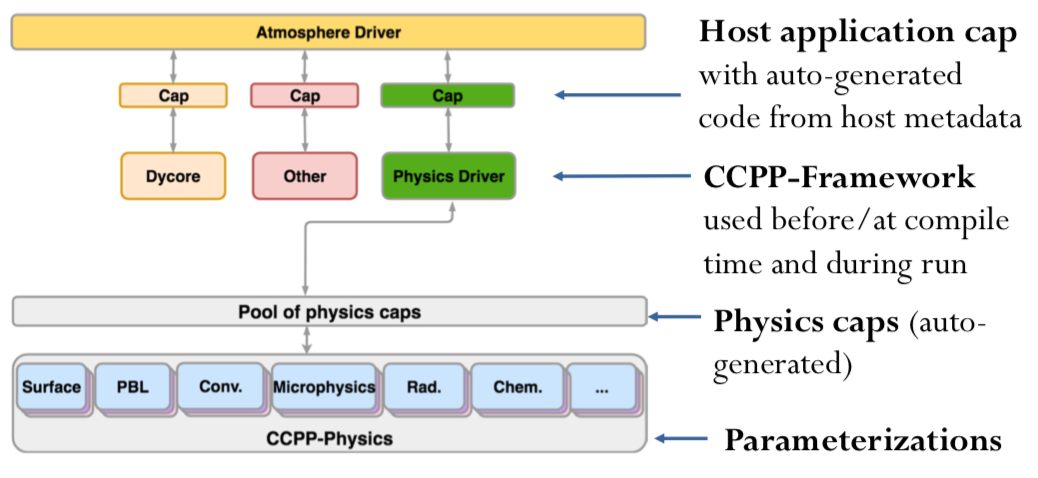There are two distinct parts to the CCPP: a library of physical parameterizations (CCPP-Physics) that conforms to selected standards and an infrastructure (CCPP-Framework) that enables connecting the physics to a host model.

The host model needs to have functional documentation for any variable that will be passed to or received from the physics. The CCPP-framework is used to compare the variables requested by each physical parameterization against those provided by the host model, and to check whether they are available, otherwise an error will be issued. This process serves to expose the variables passed between physics and dynamics, and to clarify how information is exchanged among parameterizations. During runtime, the CCPP-Framework is responsible for communicating the necessary variables between the host model and the parameterizations.